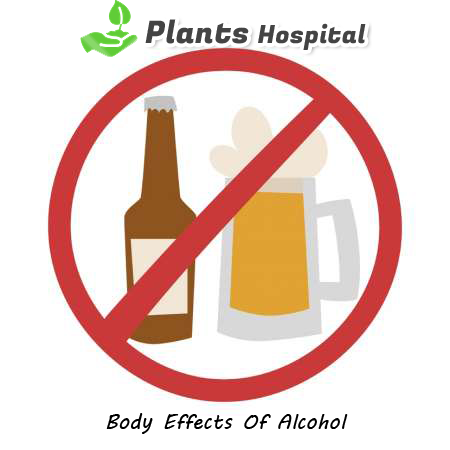Body Effects of Alcohol
At lower doses, alcohol effects can act as a stimulant, inducing feelings of euphoria and talkativeness, but drinking too much alcohol at one session can lead to drowsiness, respiratory depression (where breathing becomes slow, shallow or stops entirely), coma or even death.
As well as its acute and potentially lethal sedative effect at high doses, alcohol has effects on every organ in the body, and these effects depend on the blood alcohol concentration (BAC) over time.
After a drink is swallowed, the alcohol is rapidly absorbed into the blood (20 percent through the stomach and 80 percent through the small intestine), with effects felt within 5 to 10 minutes after drinking.
It usually peaks in the blood after 30 to 90 minutes and thus is carried through all the organs of the body.
Most (90 percent) of the metabolism, or breaking down, of alcohol from a toxic substance to water and carbon dioxide, is performed by the liver, with the rest excreted through the lungs (allowing alcohol breath tests), through the kidneys (into urine) and in sweat.
- The BAC rises, and the feeling of drunkenness occurs, when alcohol is drunk faster than the liver can break it down.
- The relationship between BAC and symptoms of drunkenness the higher the BAC, the greater the effects on the body.
- However, BAC does not correlate exactly with symptoms of drunkenness and different people have different symptoms even after drinking the same amount of alcohol. The BAC level and every individual’s reaction to alcohol is influenced by:
- The ability of the liver to metabolize alcohol (which varies due to genetic differences in the liver enzymes that break down alcohol)
- The presence or absence of food in the stomach (food dilutes the alcohol and dramatically slows its absorption into the bloodstream by preventing it from passing quickly into the small intestine)
The concentration of alcohol in the beverage (highly concentrated beverages such as spirits are more quickly absorbed) - How quickly alcohol is drunk.
- Body type (heavier and more muscular people have more fat and muscle to absorb the alcohol)
Age, ethnicity (e.g. women have a higher BAC after drinking the same amount of alcohol than men due to differences in metabolism and absorption – since men have on average more fluid in their body to distribute alcohol around than women do; some ethnic groups have different levels of a liver enzyme responsible for the breakdown of alcohol).
How frequently a person drinks alcohol (someone who drinks often can tolerate the sedating effects of alcohol more than someone who does not regularly drink)

Overall Body Effects
Affects all parts of the body including:
1) Blood and immune system.
2) Bones and muscles.
3) Brain and nervous system.
4) Breasts. (in women)
5) Eyes.
6) Heart and blood pressure.
7) Intestines.
8) Kidneys and fluid balance.
9) Liver.
10) Lungs.
11) Mental health.
12) Mouth and throat.
13) Pancreas and digestion of sugar.
14) Sexual and reproductive system – men.
15) Sexual and reproductive system – women.
16) Skin and fat.
17) Stomach and food pipe. (esophagus)
As well as potentially affecting the physical and mental health of individuals in many ways, chronic and heavy alcohol use can increase the risk of death either directly, for example through acute alcohol poisoning or because alcohol causes a fatal disease such as cancer, or indirectly, such as alcohol being a factor in violent death or suicide.
Alcohol contributes to a high burden of disease in society in terms of years that people spend with disability or in poor health because of alcohol-related illnesses or injuries. Unintentional injuries from alcohol use often result from falls, burns, motor vehicle accidents, assaults, and drowning.

